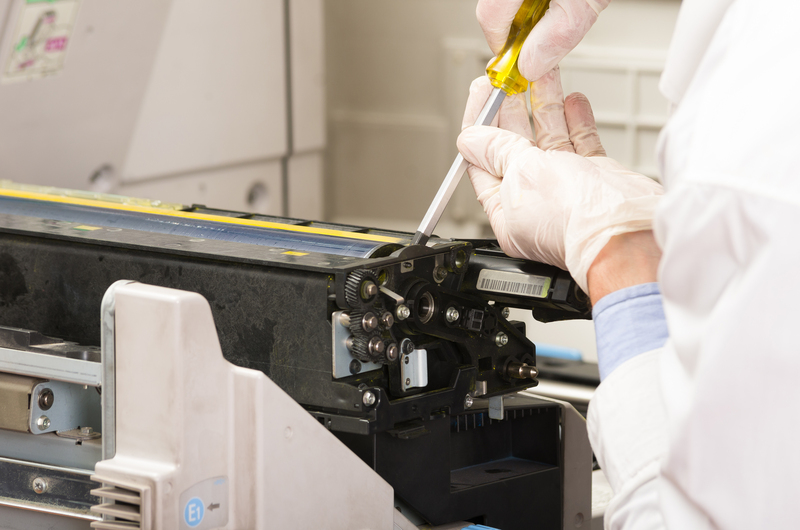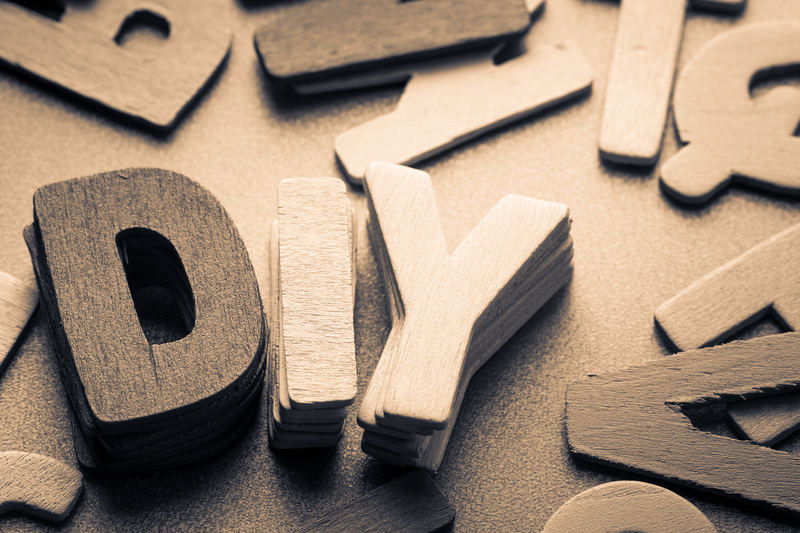Sustainable Methods to Recycle Your Old Cookware
Have a kitchen full of worn-out pots and pans? Wondering what to do with damaged or obsolete cookware? Recycling old cookware sustainably is a practical and eco-friendly answer. This article explores various methods to recycle your old pans, pots, and utensils--helping you make environmentally conscious decisions while decluttering your kitchen.

Why Should We Recycle Old Cookware?
- Reduces landfill waste: Cookware made of metal, ceramic, and plastic can persist for centuries in landfills.
- Conserves resources: Recycling recovers valuable metals and materials for use in new products.
- Protects the environment: Sustainable disposal prevents toxic coatings (like Teflon when overheated) from leaching into the soil.
- Supports a circular economy: Items given a second life consume fewer raw materials.
Did you know? The Environmental Protection Agency estimates the United States throws away millions of tons of metal each year, including pots and pans. Choosing sustainable disposal options for your cookware makes a real difference!
Identifying Cookware Recycling Options
Before you toss your old frying pan or saucepan, ask yourself:
- Is the cookware still functional? Consider donation or reuse.
- What material is it made from? Most cookware consists of aluminum, stainless steel, cast iron, copper, or ceramics.
- Does it have plastic or non-stick coating? Some recycling programs have restrictions.
- Is there a take-back program from the manufacturer?
General Tips for Recycling Old Pots and Pans
- Clean and remove as much food residue and debris as possible.
- If possible, separate handles or glass lids for proper recycling.
- Identify the recycling symbol or metal type if on the item.
Sustainable Methods to Recycle Used Cookware
1. Donate Usable Cookware
If your old cookware is still usable--maybe it's just out of style, mismatched, or you've upgraded--donation is the greenest option. Many people, shelters, and charity shops would welcome your gently used pots and pans.
- Local thrift stores
- Homeless and domestic violence shelters
- Community centers and schools
- Online freecycle or gifting groups like Facebook Marketplace, Buy Nothing Project
Giving your cookware a second life helps reduce waste and supports those in need.
2. Upcycling Cookware into Art or Functional Items
Don't just throw that cracked pan away--see it as a canvas! Upcycling transforms old cookware into art or household goods:
- Pots and pans: Turn into planters, clocks, bird baths, or storage containers.
- Utensils: Craft into hooks, wind chimes, or quirky wall art.
- Lids: Make mosaics, suncatchers, or mirrors.
Upcycling is a creative way to reduce landfill pressure and personalize your space.
3. Scrap Metal Recycling for Non-Stick and Metal Cookware
Metal recycling centers are ideal for non-stick pans, aluminum, stainless steel, and cast iron pots that can't be donated. Here's how to recycle metal cookware properly:
- Call your local recycling facility to confirm they accept old cookware – many do!
- Remove non-metal parts like plastic handles if requested.
- Most centers accept the following cookware types:
- Aluminum pots and pans
- Stainless steel cookware
- Cast iron skillets
- Copper-bottomed pans
Note: Non-stick coatings like Teflon are generally burned off during high-temperature processing, but check with your recycler if they require you to remove these coatings beforehand.
4. Retailer & Manufacturer Take-Back Programs
Some major brands actively support eco-friendly cookware recycling:
- GreenPan offers a take-back program for non-stick pans in some regions.
- Le Creuset and others may take back old cookware if you purchase a replacement.
- Sur La Table and other retailers occasionally host cookware recycling drives--check their schedules.
Contact the manufacturer or store where you bought your pans. These programs ensure proper dismantling and material recovery, reducing resource waste.
5. Curbside Recycling & Waste Collection Services
Many towns offer scrap metal curbside pickup or community drop-off centers accepting kitchenware. Guidelines vary widely:
- Some programs only accept ferrous metals--use a magnet to check (it sticks to iron and steel, but not to aluminum or copper).
- Remove glass lids and non-metal parts before recycling.
- Bundle small items like cutlery together for safety.
- Never put ceramics, glass, or heavily coated pans in metal/plastic recycling bins.
6. Repurpose Old Cookware in the Garden
Pot with a hole? Rusty pan? Use as garden planters or tool holders. Terracotta and ceramic cookware, if unglazed and untreated, can be crushed and added to compost or used as drainage at the base of plant pots.
- Cast iron makes durable garden markers or stepping stones.
- Old colanders work perfectly as hanging baskets.
7. Specialized Ceramic and Glass Recycling Options
While recycling glass lids and ceramic cookware can be challenging, some communities offer:
- Ceramic-only collection points at waste centers
- Construction material recycling, where ceramics become road aggregate
Check with your local municipality or landfill about specialized options. Do not put ceramics or glass cookware in regular curbside glass bins, as they melt at different temperatures and can contaminate batches.
What About Non-Stick, Teflon-Coated, or Anodized Cookware?
Non-stick pans present unique challenges due to their chemical coatings. Here's what you can do:
- Recycle as scrap metal if your center accepts non-stick pans--coating can be burned off in metals processing.
- If not allowed, upcycle or search for a hazardous waste program that accepts cookware with synthetic coatings.
- Anodized cookware (aluminum oxidized for durability) can usually go in standard scrap metal recycling.
Always confirm with your local recycler. Never burn off Teflon coatings yourself, as the fumes can be toxic.
How to Prepare Cookware for Responsible Recycling
- Thoroughly clean: Remove food and grease.
- Disassemble if possible: Remove plastic, wood, or silicone handles for separate recycling or landfill.
- Sort by material: Group metals together, keep lids and glass separate.
- Contact your recycling center: If in doubt, ask about their requirements or accepted items.
Advantages of Recycling & Upcycling Old Cookware
- Reduces demand for raw material extraction: Mining bauxite (for aluminum) and iron ore is energy- and water-intensive.
- Lessens greenhouse gas emissions: Recycling metals emits far less CO2 relative to primary extraction and refining.
- Keeps toxins out of landfill: Prevent toxic metal leaching and pollution.
- Supports community: Donations help families and shelters on tight budgets.
- Encourages creativity: Upcycling fosters art and DIY projects that personalize homes and gardens.
Common Questions on Sustainable Cookware Recycling
Can I throw old frying pans in the recycling bin?
Usually not in regular curbside bins. Most household recycling doesn't accept large metal items. Take them to a scrap metal recycler or find a special collection program.
What about cookware with plastic or wooden handles?
Remove non-metal parts and recycle them separately if possible. The metal body can still be recycled in most cases.
Are non-stick pans recyclable?
Some scrap yards accept them, as the Teflon burns off during metal processing. Always check with your local recycler first.
Does anyone repair old cookware?
Cast iron can often be re-seasoned and repaired. Enamelware or copper can be professionally restored, though it may be costly.
Can ceramics and glass cookware be recycled?
Only at specialty programs. Don't put them with regular glass recycling.

Tips to Avoid Waste with Future Cookware Purchases
- Choose durable materials: Stainless steel and cast iron last decades and are easy to recycle.
- Avoid too many specialty pieces: Select multipurpose cookware.
- Buy from brands with recycling programs: Support companies that encourage sustainability.
- Proper care: Use non-metal utensils and proper cleaning methods to extend lifespan.
Conclusion: Your Path to Sustainable Cookware Disposal
Recycling and upcycling old cookware is not only possible but essential for reducing kitchen waste. Sustainable cookware recycling methods--including donation, metal recycling, manufacturer take-back, and creative repurposing--keep valuable materials in use and out of the landfill. By following these steps, you'll help conserve resources, reduce pollution, and make your kitchen a greener, more thoughtful space.
Ready to start? Check your local recycling policies, donate what you can, unleash your creativity with upcycling projects, and always choose cookware with sustainability in mind. Every pot and pan you recycle or repurpose is a win for the planet!